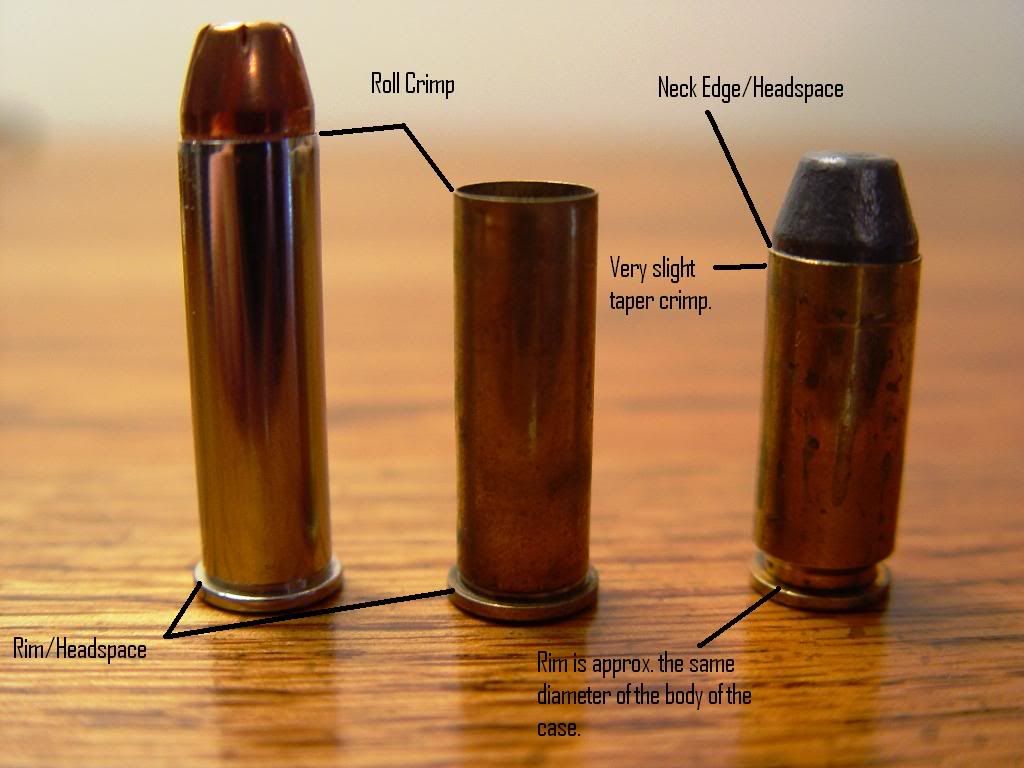Nothing is overly special about the 10mm Glock that isn't special about any Glock.
The 10mm is the parent of the 40 cal. The 40SW is about 1/8" shorter than the 10mm, and operates at a slightly lower pressure.
(This is for a Houser, but I figured someone else might like the read)
Head space is the distance the bullet fits into the chamber, which controls how close the bullet is to the rifling, and how it fits in chamber.
Revolvers typically and traditionally fire a rimmed cartridge. The head spacing is held by the rim of the case which keeps the cartridge from falling into the chamber.
Pistols typically head space off the mouth of the cartridge. If you compare a 9mm to a 357, you can see the rebated (shrunk) rim the 9mm has, and the pronounced rim the 357 has. Also you won't see a 9mm with a heavy crimp like the 357, since the edge of the neck is what holds the loaded cartridge in place.
This is why you can fire a 38 in a 357. The 38 is a weaker round, and since the head spacing is held by the rim, there's no reason you can't fire a 38 in a 357.
But what about the 40cal in a 10mm? Essentially the 40cal is just a short 10mm, just like the 38 is a short 357. The kicker is in a pistol, the ledge/shoulder/edge at the mouth of the case is what keeps the bullet from falling too deeply into the chamber, out of the firing pin's reach.
However, all isn't lost, the extractor should be plenty strong enough to hold the 40cal case against the breech face, allowing the firing pin to reach the primer and send the round down the tube.
What are the disadvantages? If you fire many rounds (several hundred to several thousand), the 10mm chamber will build up residue where the 40 cal case stops. If you don't clean out this fouling, the 10mm may not be able to get all the way in the chamber. This could cause anything from a malfunction to an out of batter firing, however a properly tuned gun (from the factory, nothing special) won't allow the firing pin to fall unless the chamber is in battery.
Another theoretical downside is a decrease in accuracy. With the case being held only on one side, it has the tendency to pivot that way until it hits the chamber wall. Most handgun shooters wouldn't be able to discern this difference.
Yet another downside is the potential for the extractor to miss the rim of the case, which would lead to a failure to fire in most cases since the firing pin can't reach the primer.
The last downside I can think of is the extractor "isn't designed for that." While that's strictly true, there's far more stress on the extractor pulling a sticky piece of brass out of the chamber and flinging it across the range at mach 3.
All that being said, I personally fire 40 cal in a 10mm the same as I would a 38 in a 357. If you fire enough 38's in a 357, you can feel the difference in fit when you try to load a 357 on top of the fouling left by the shorter 38.
Pics to follow.







